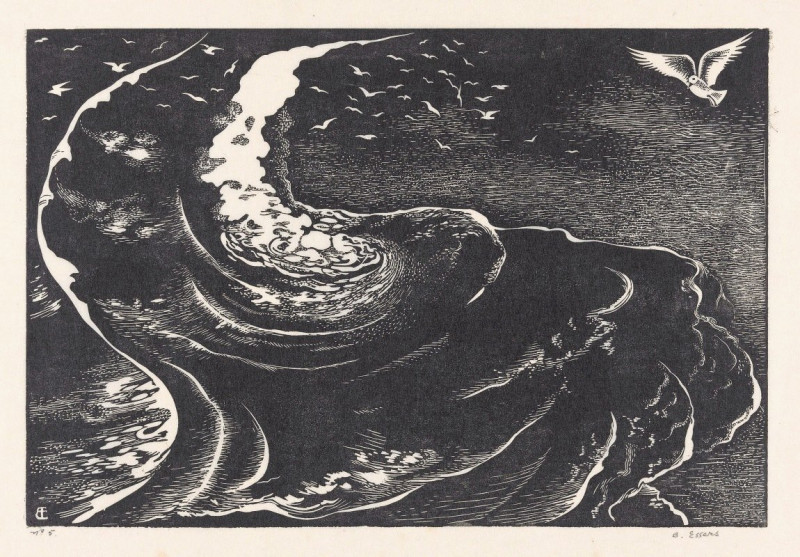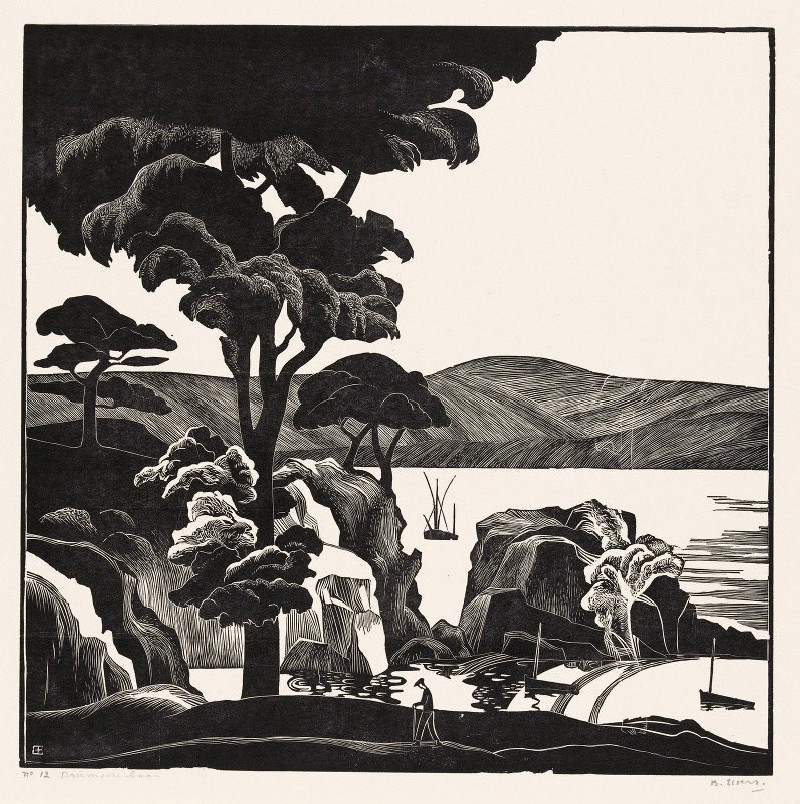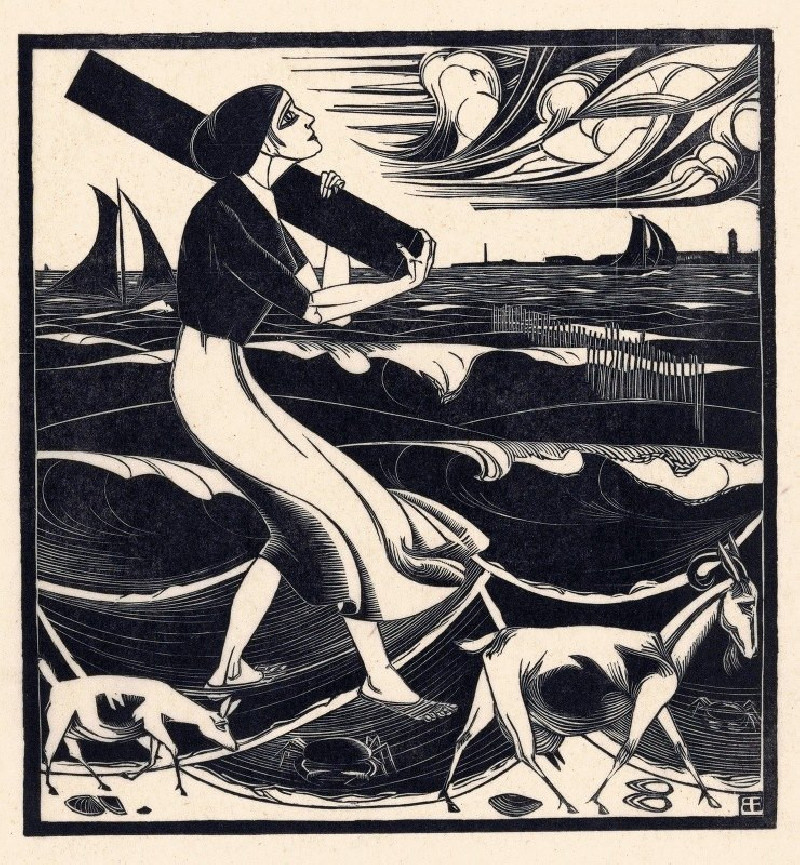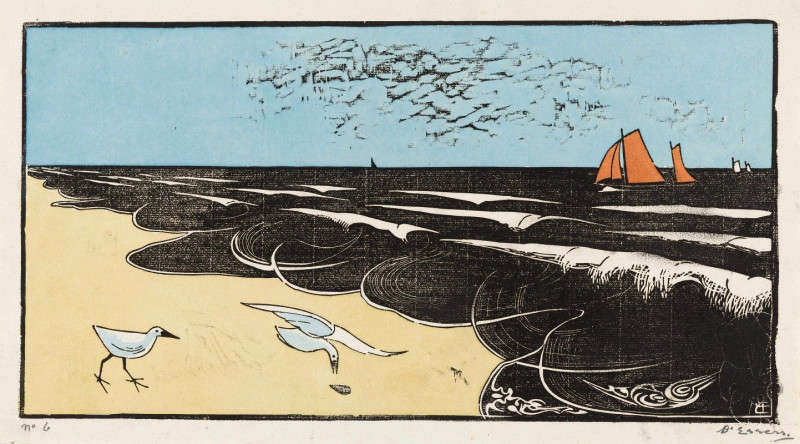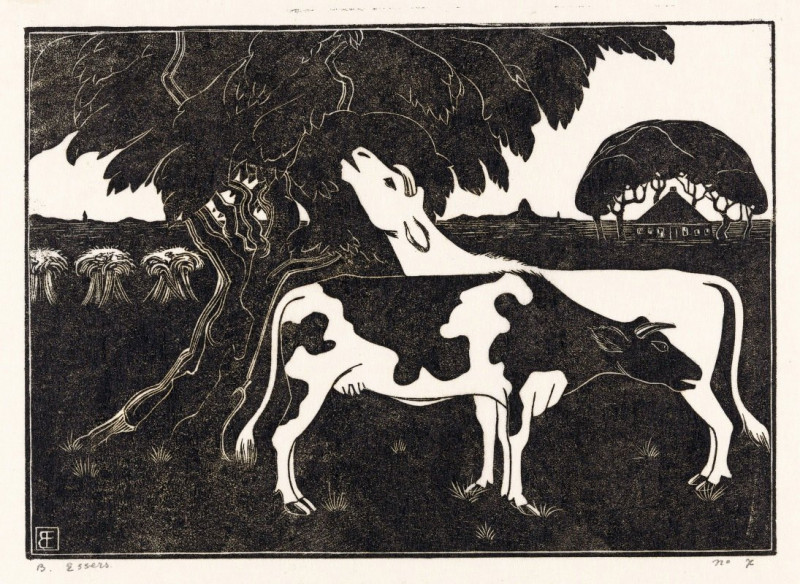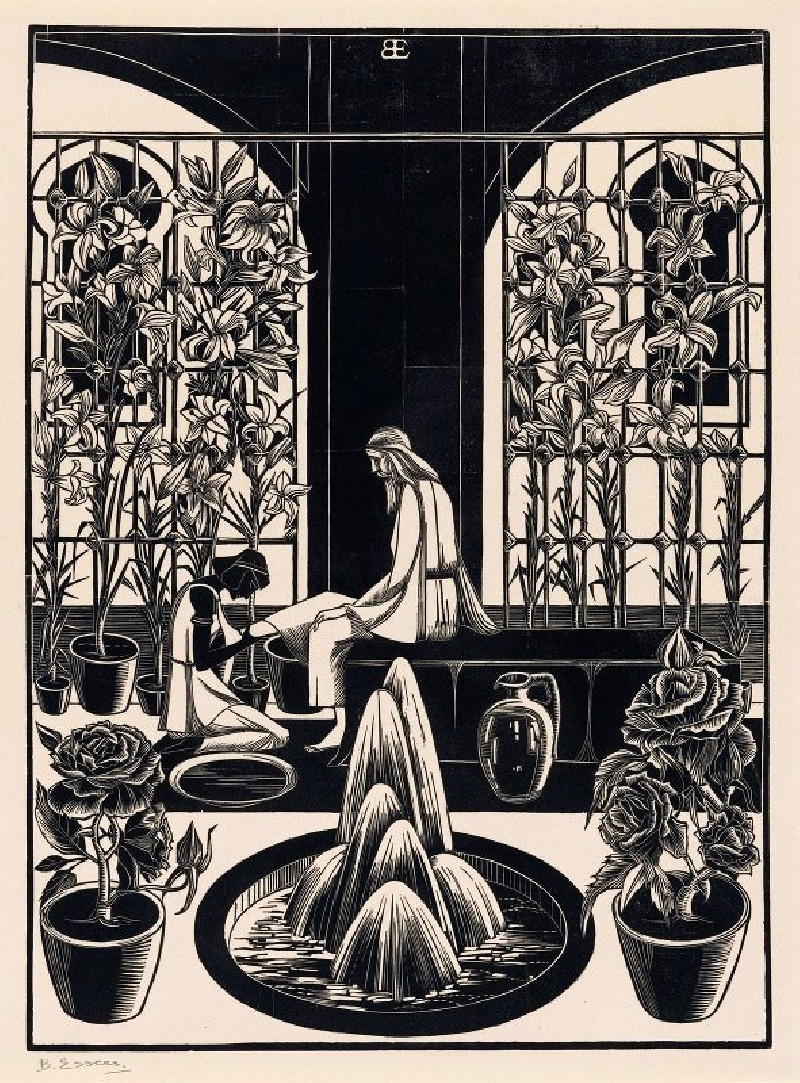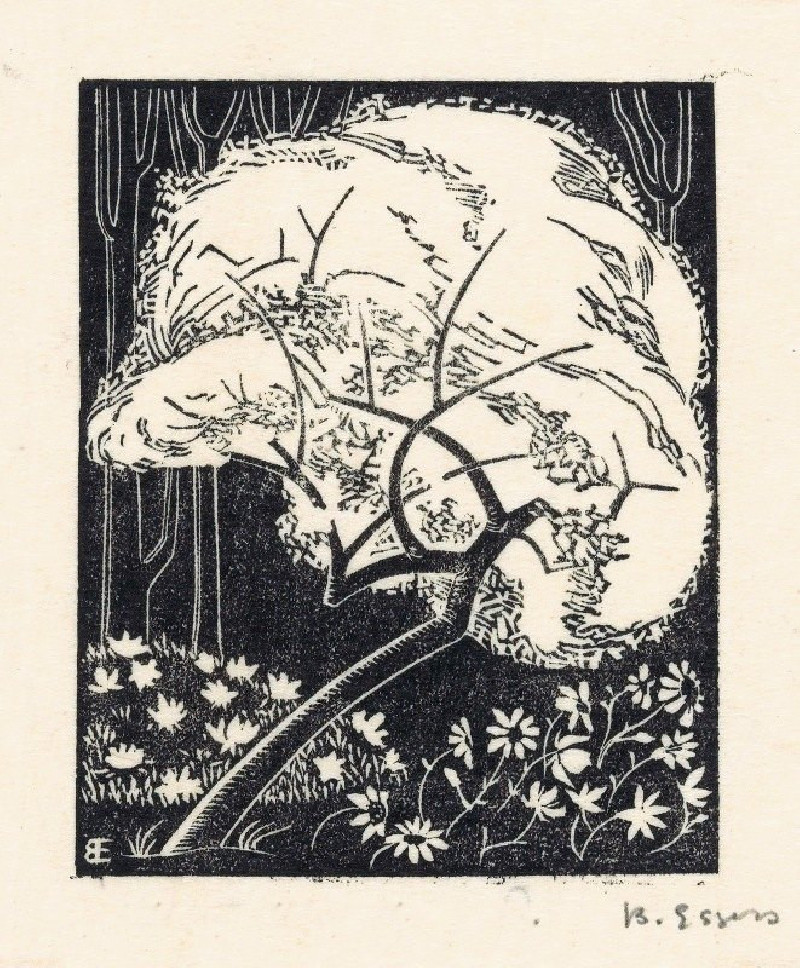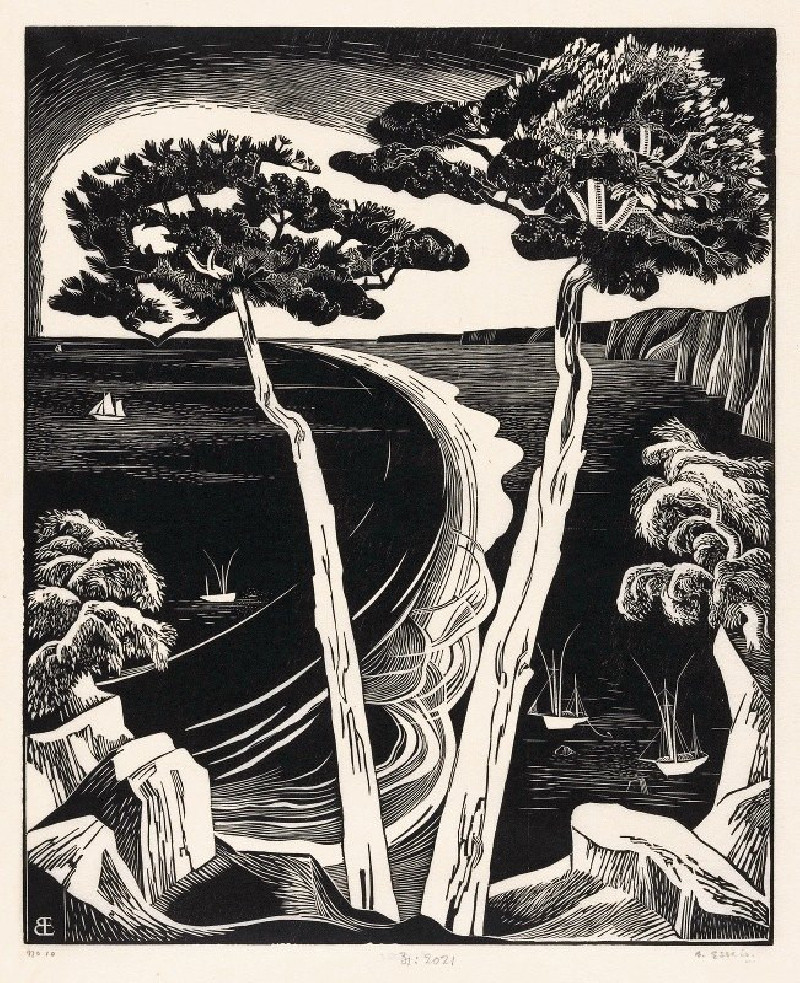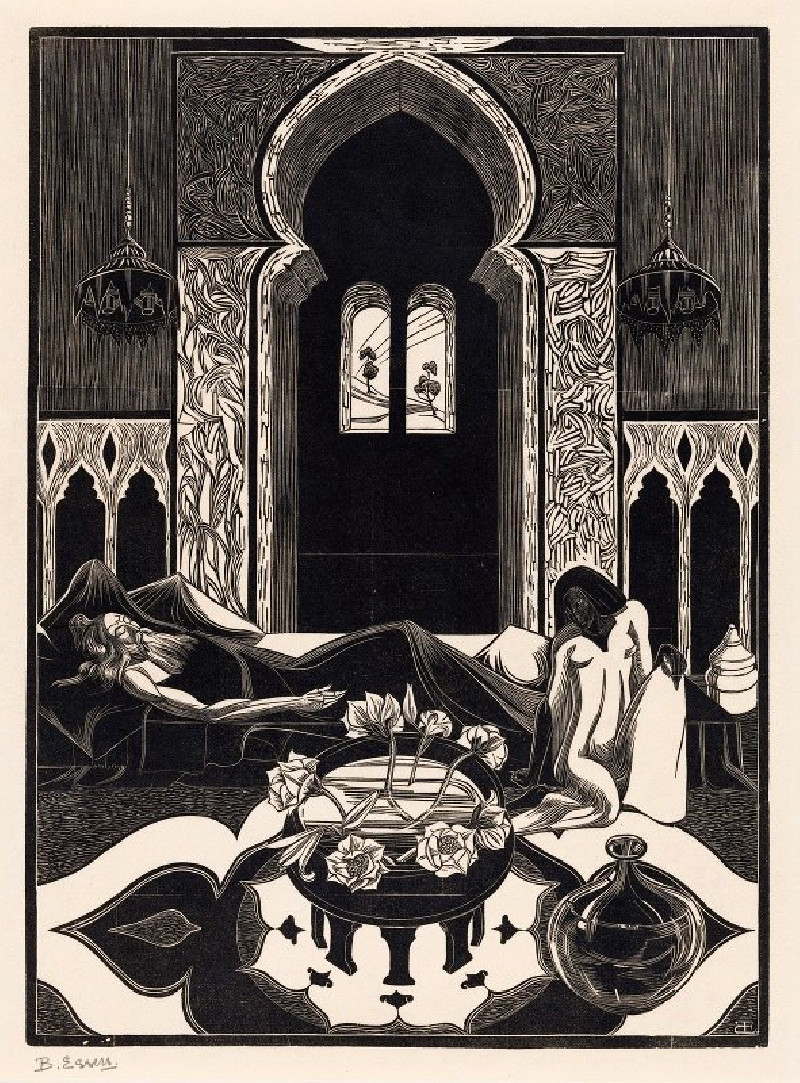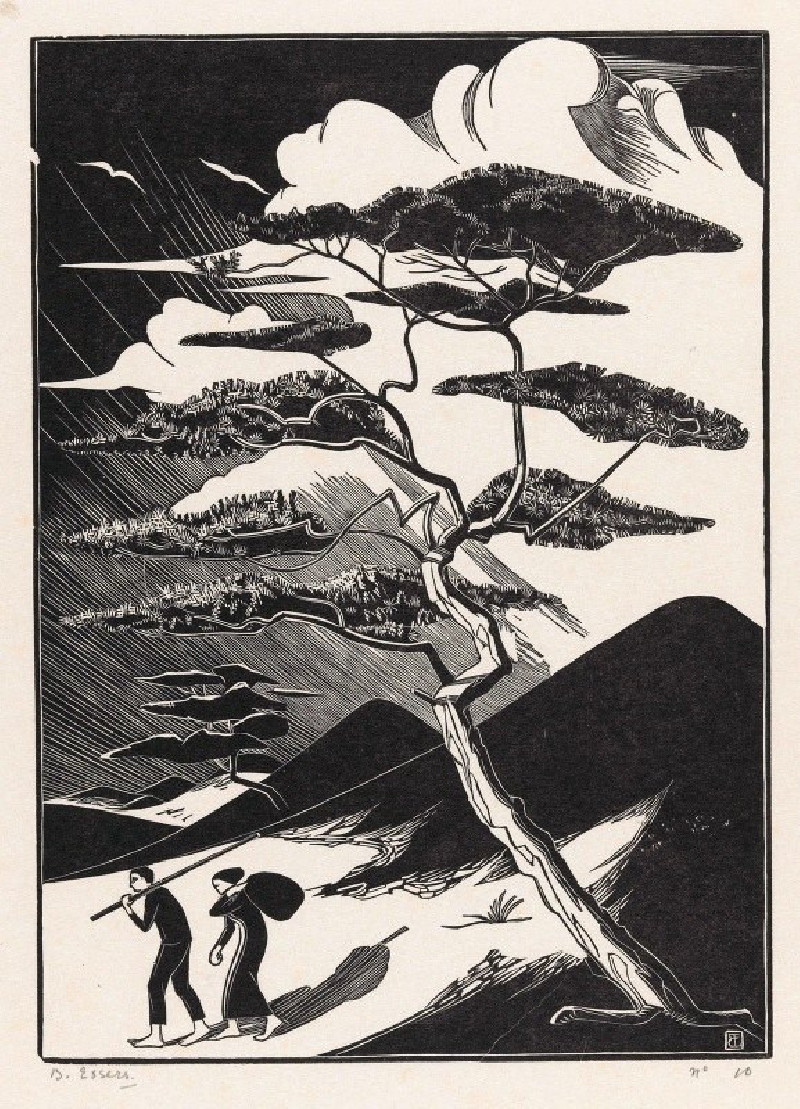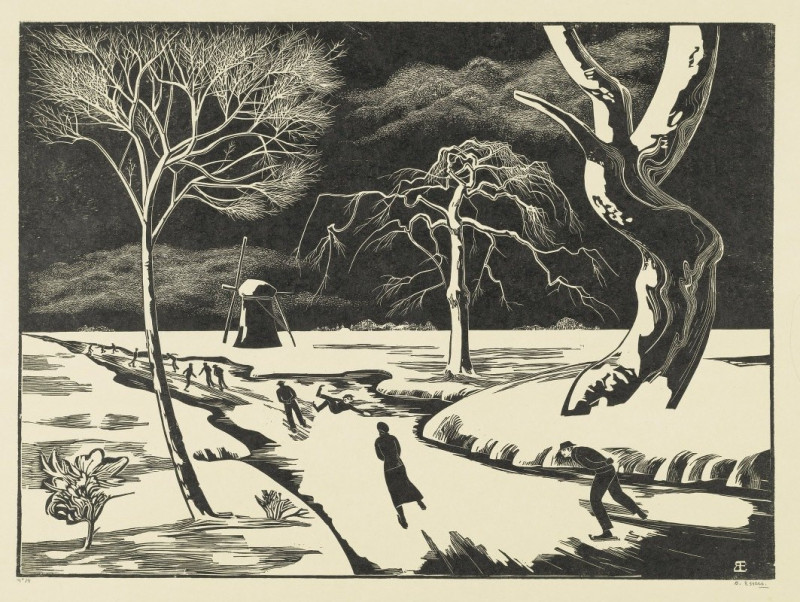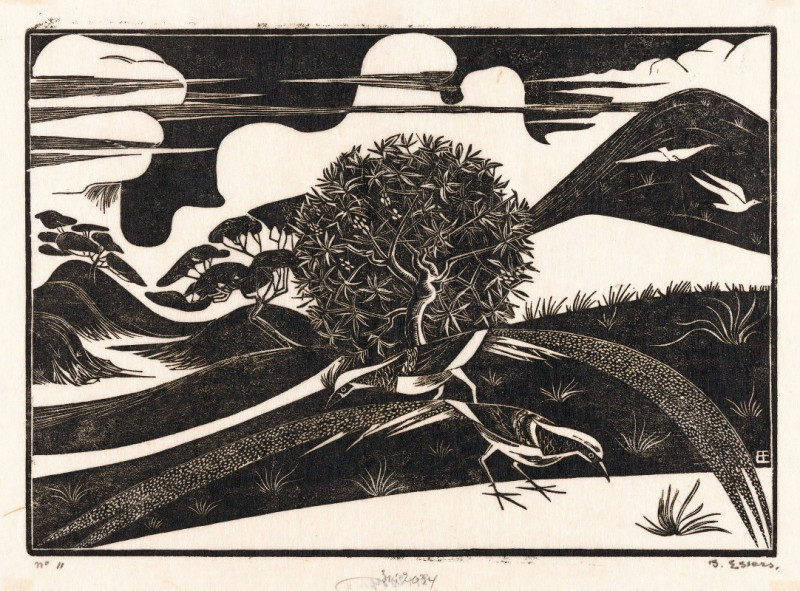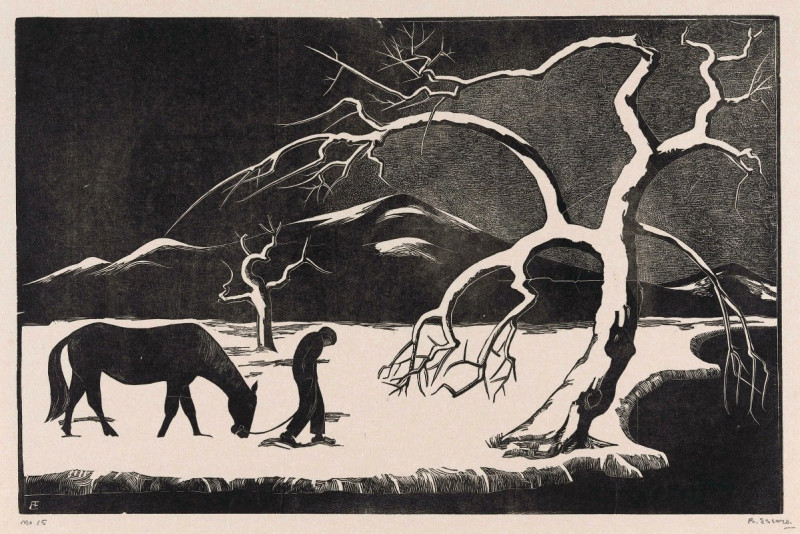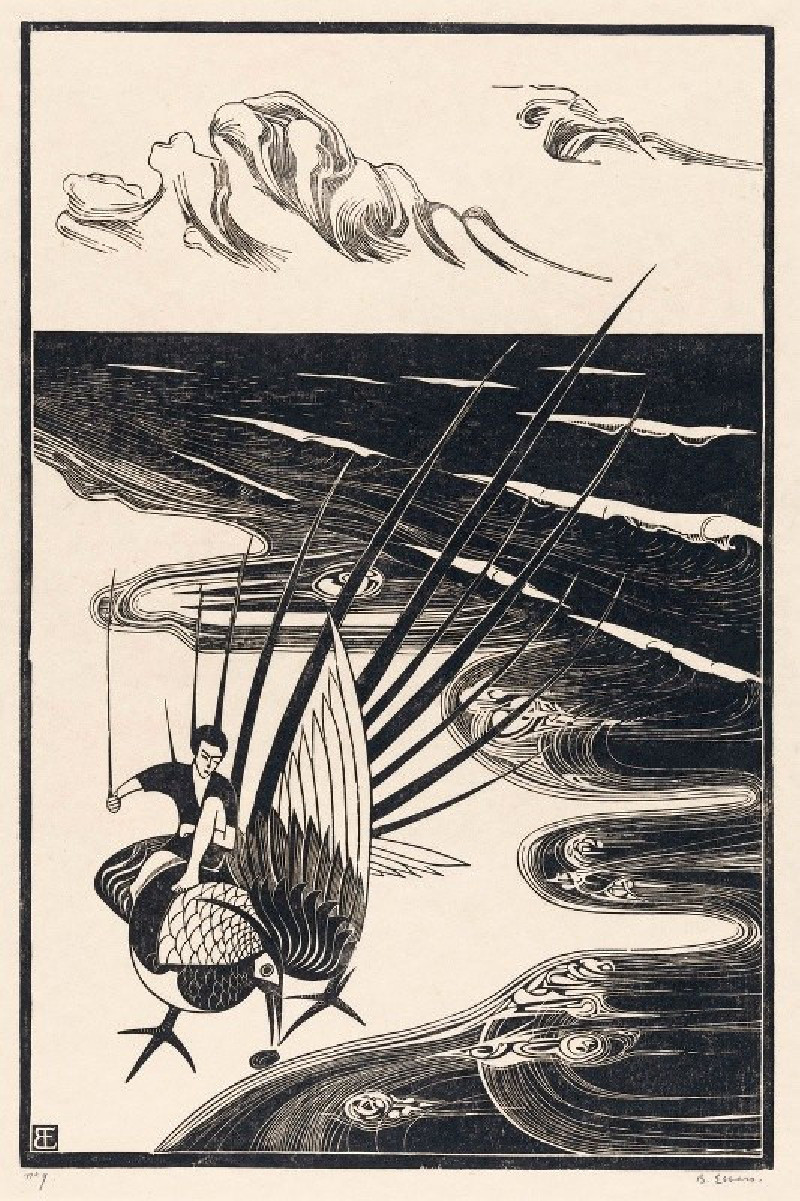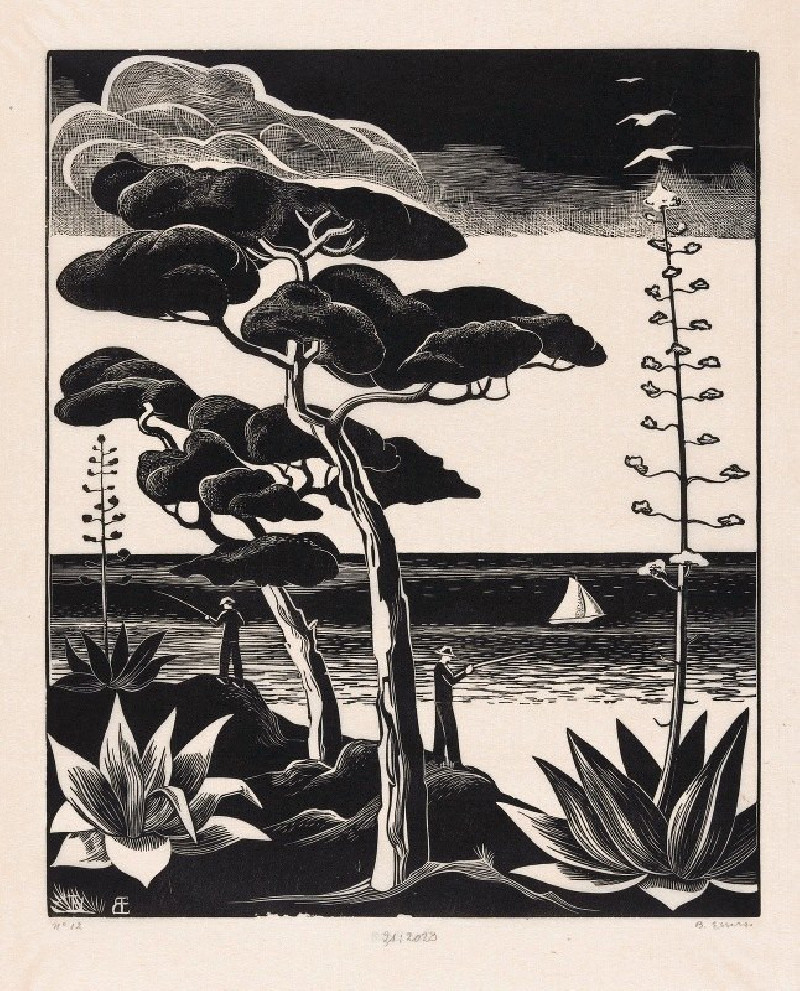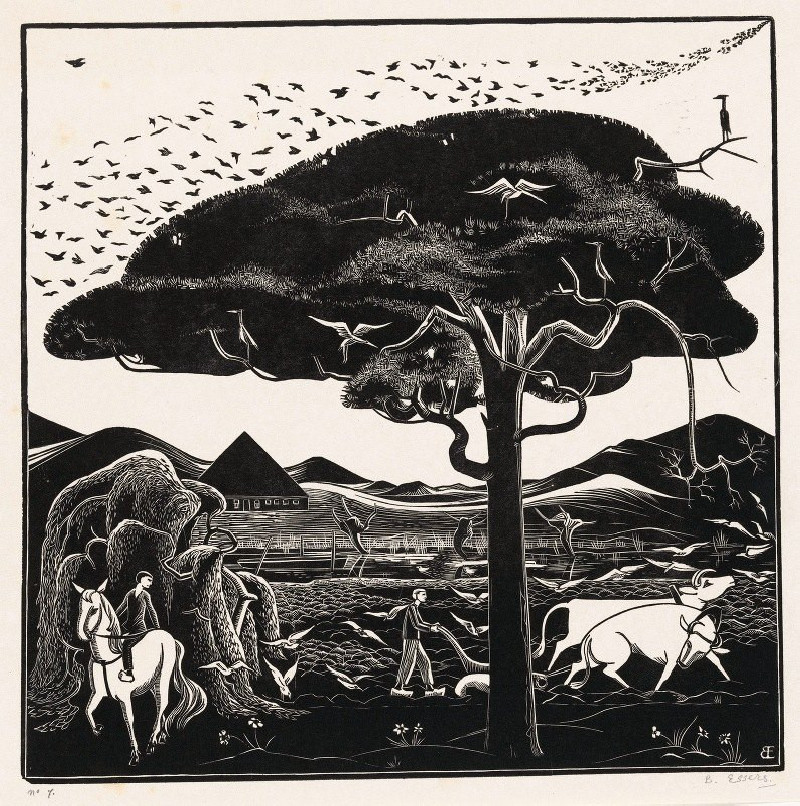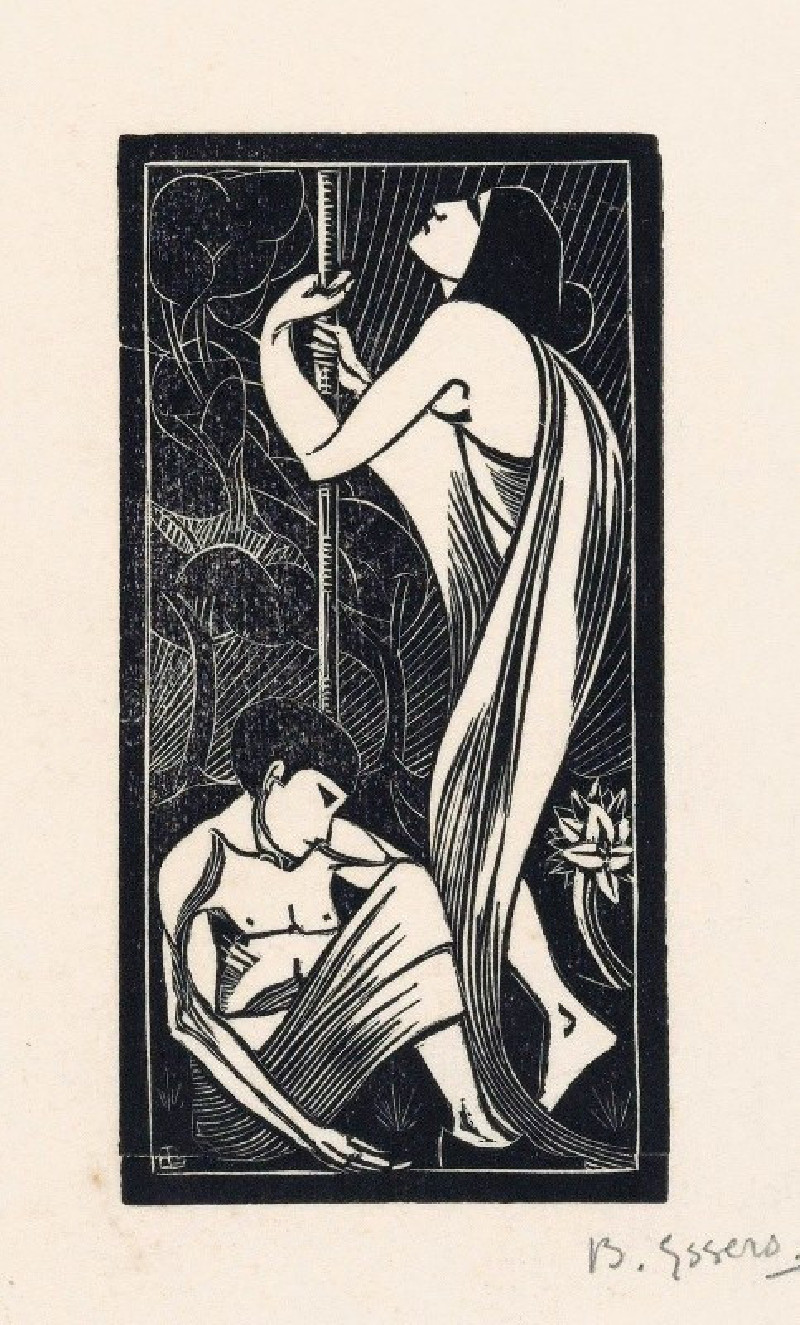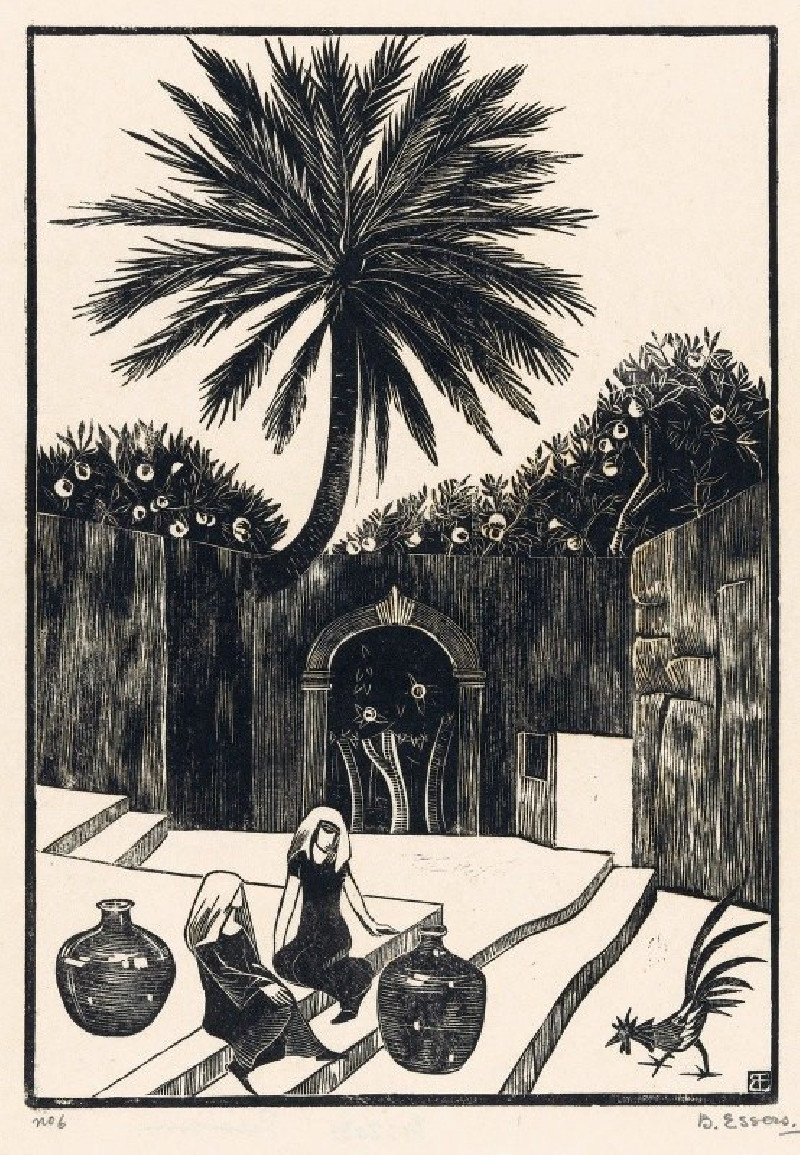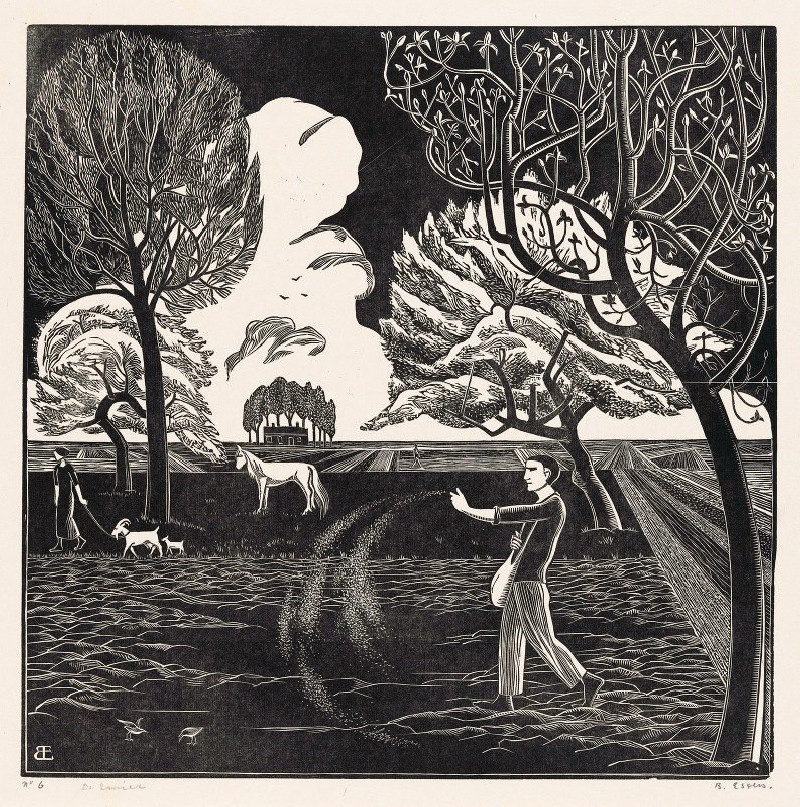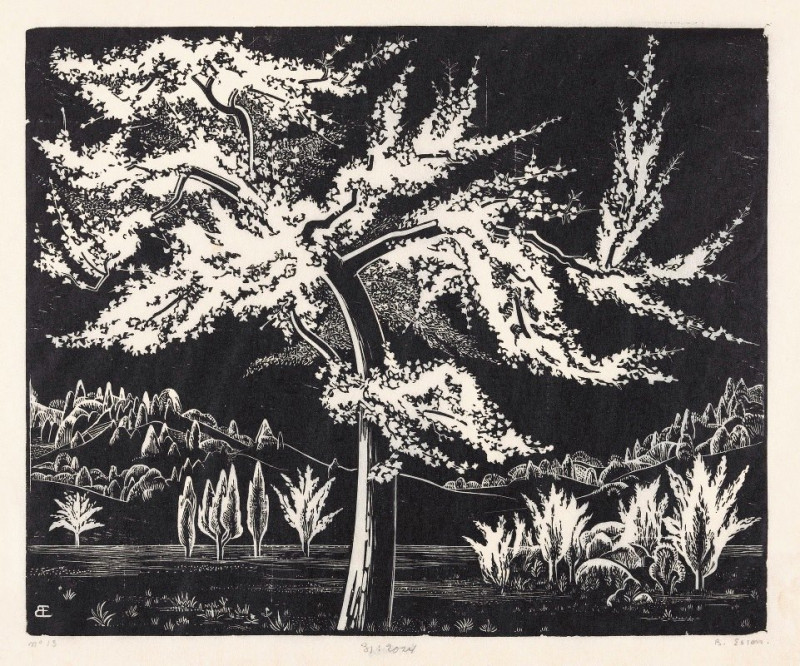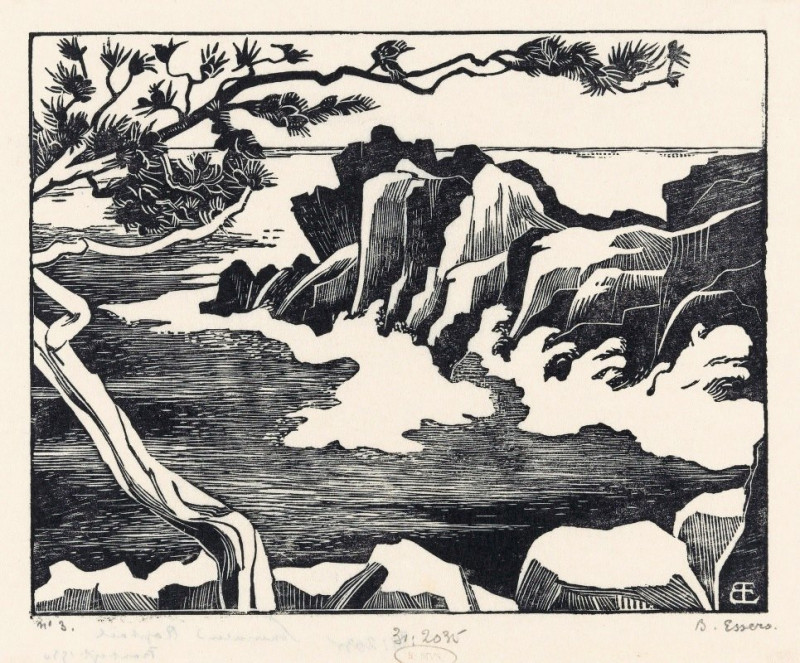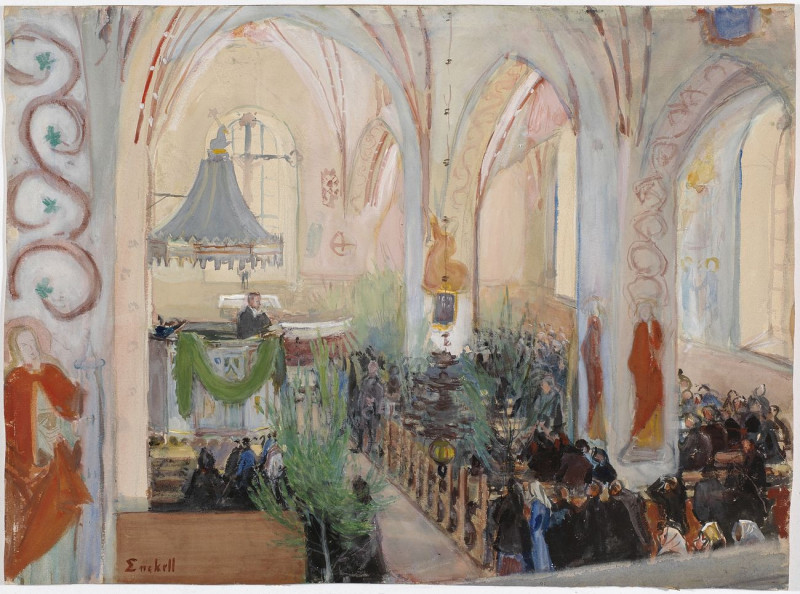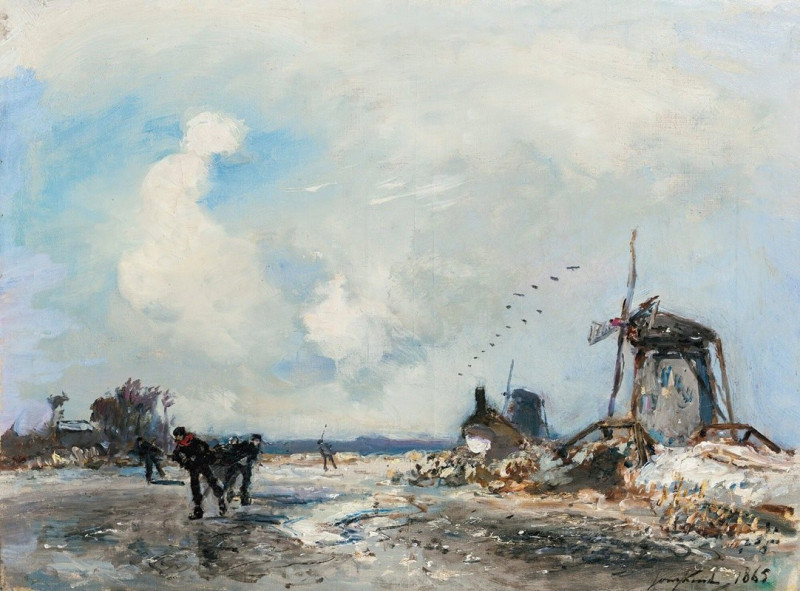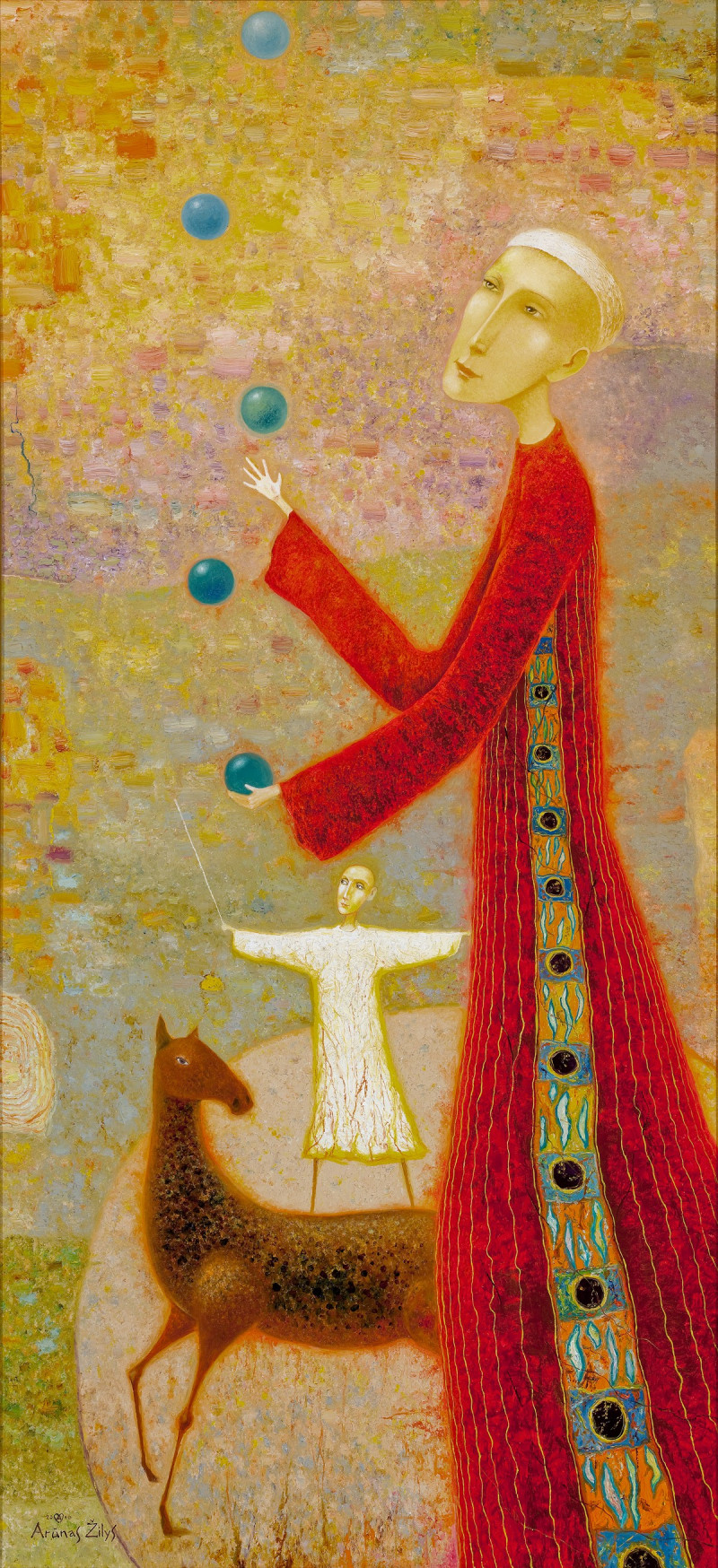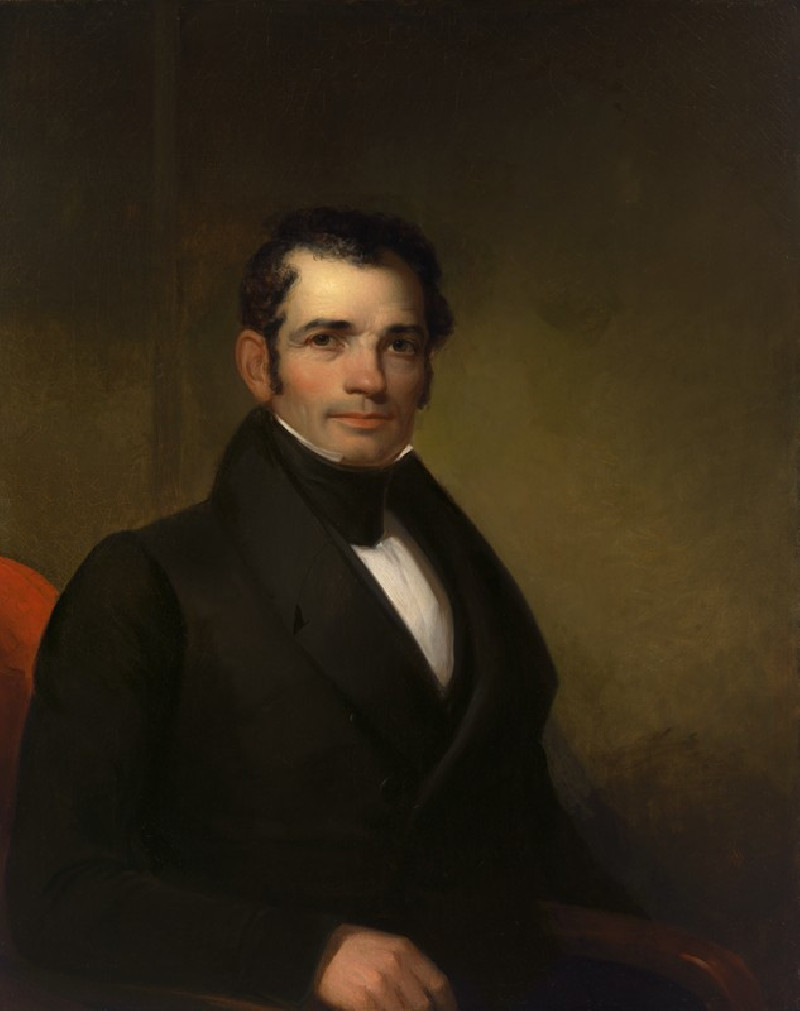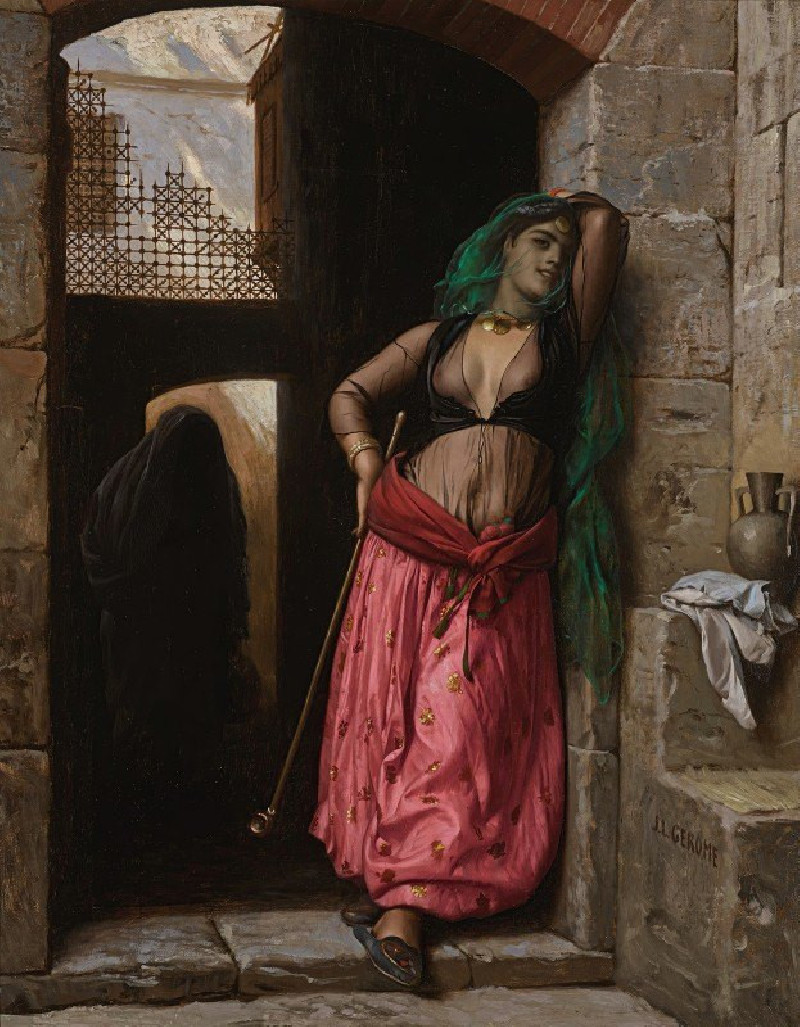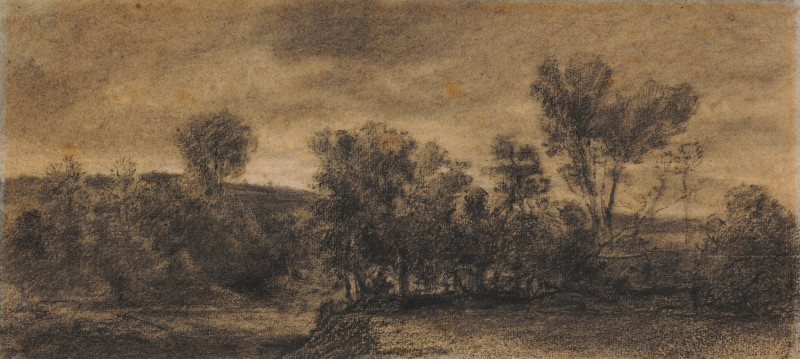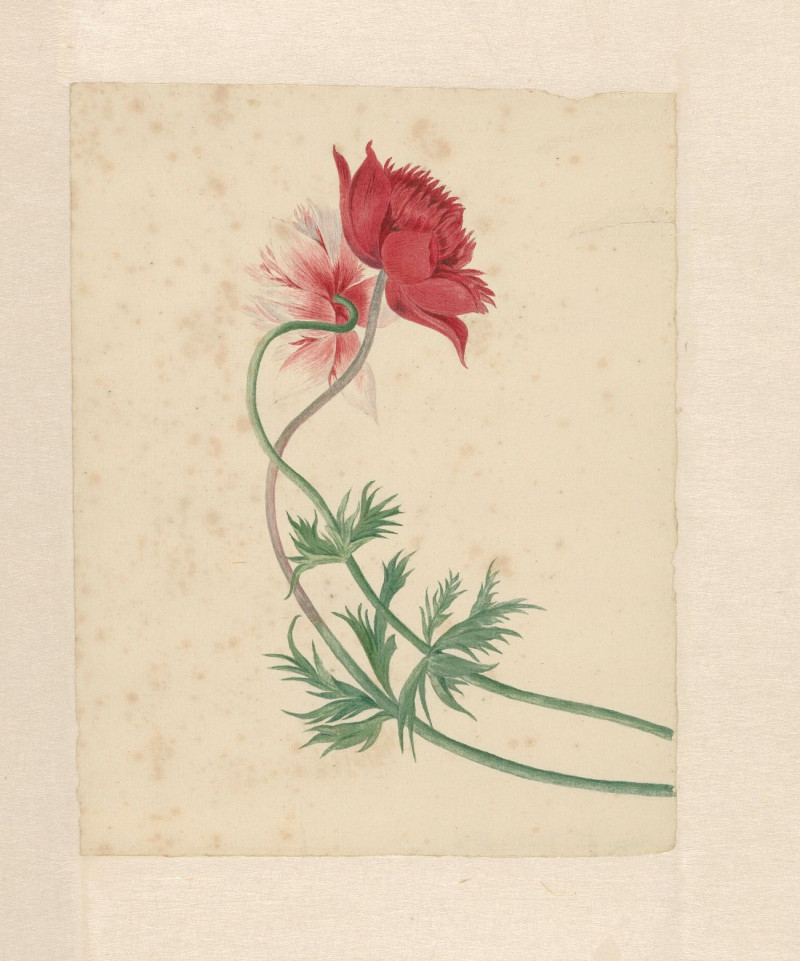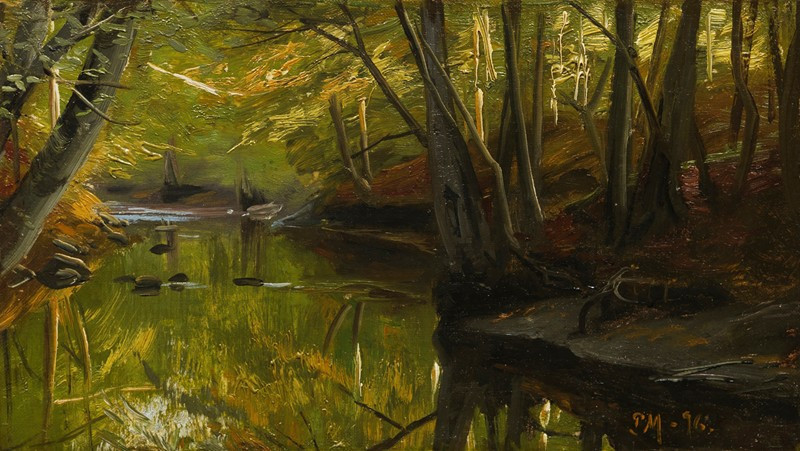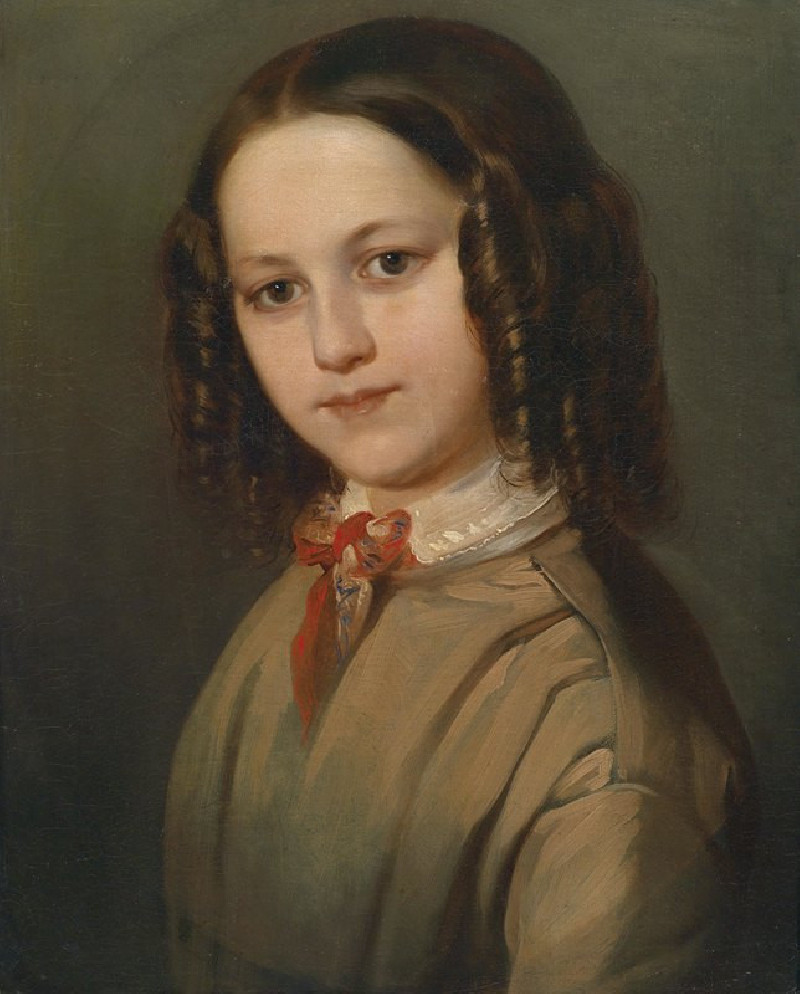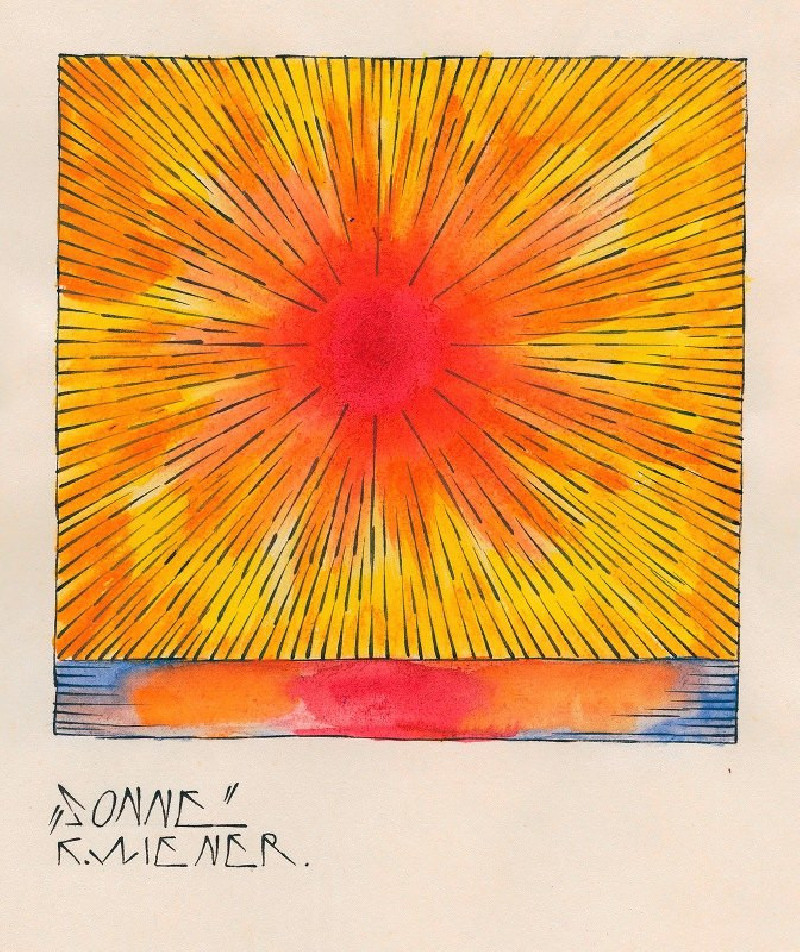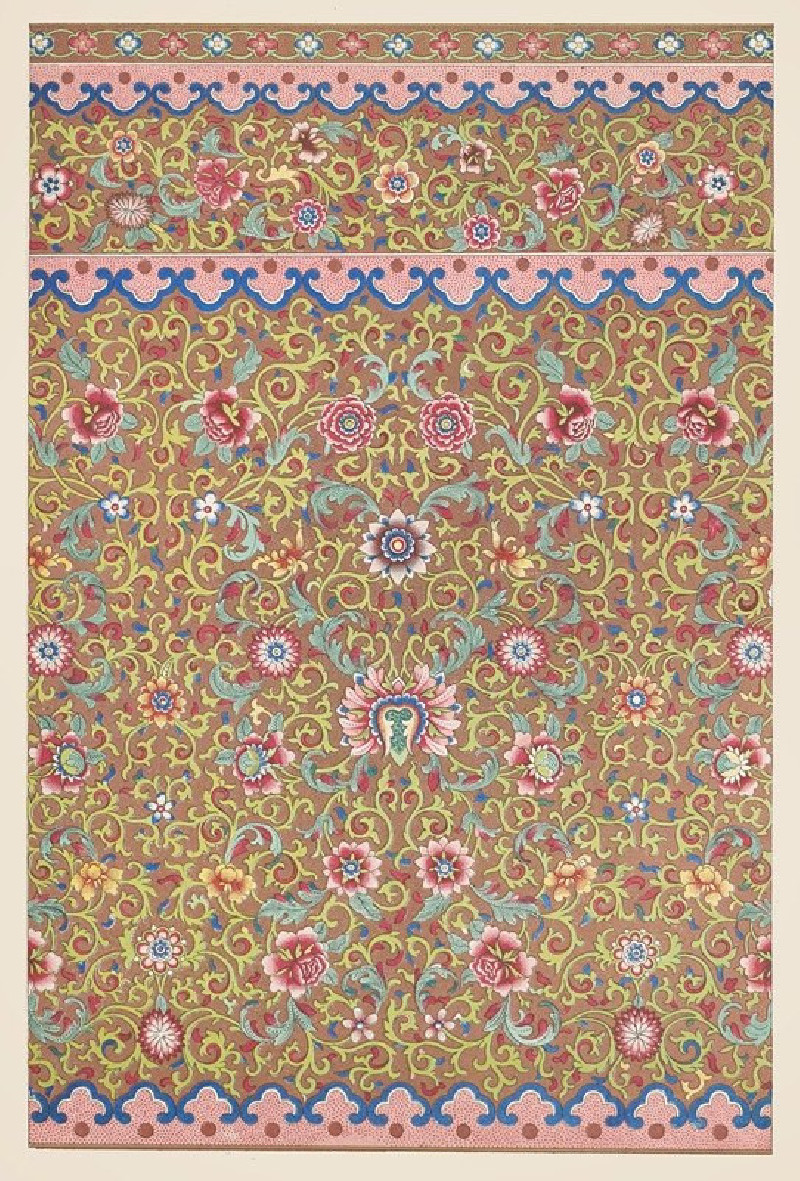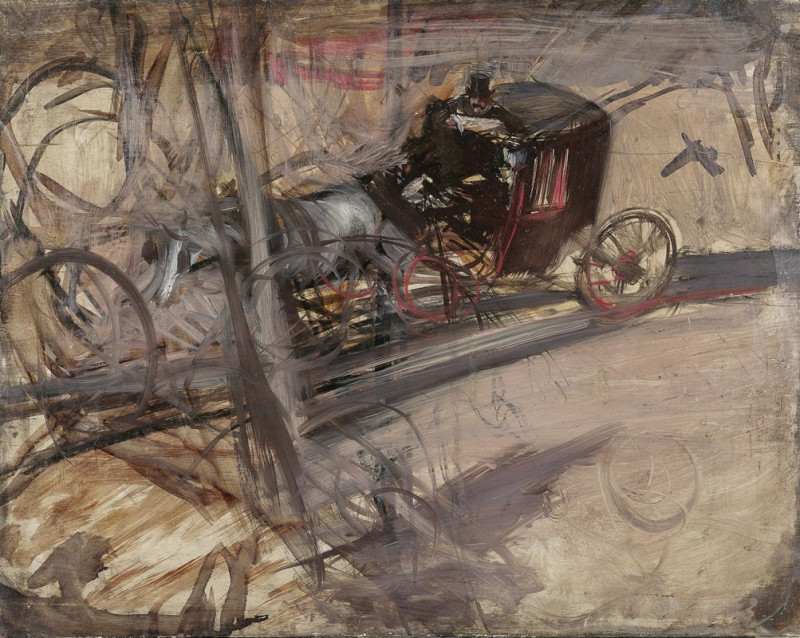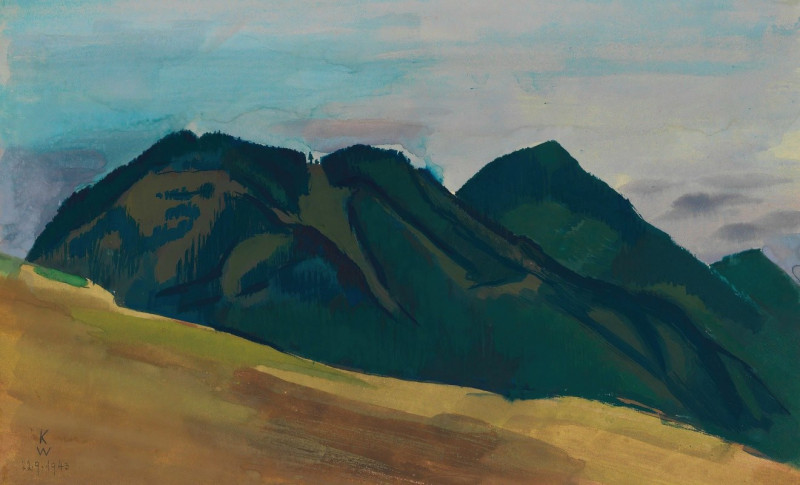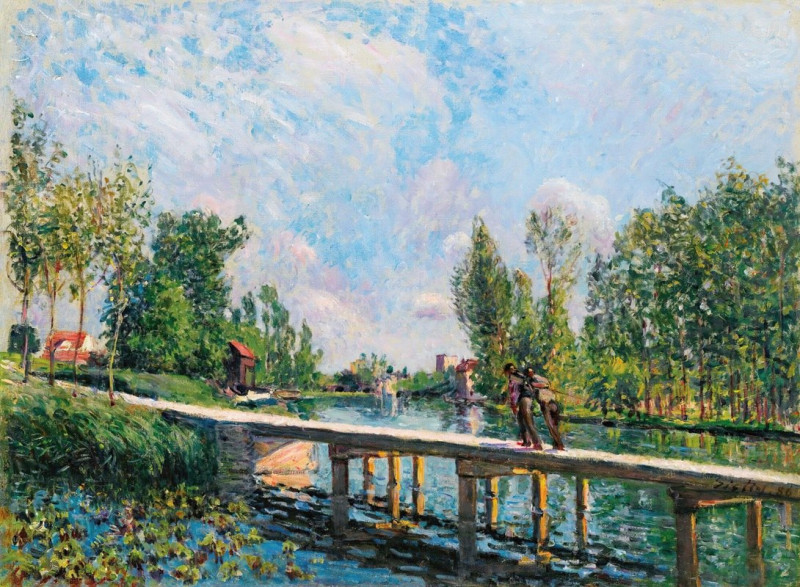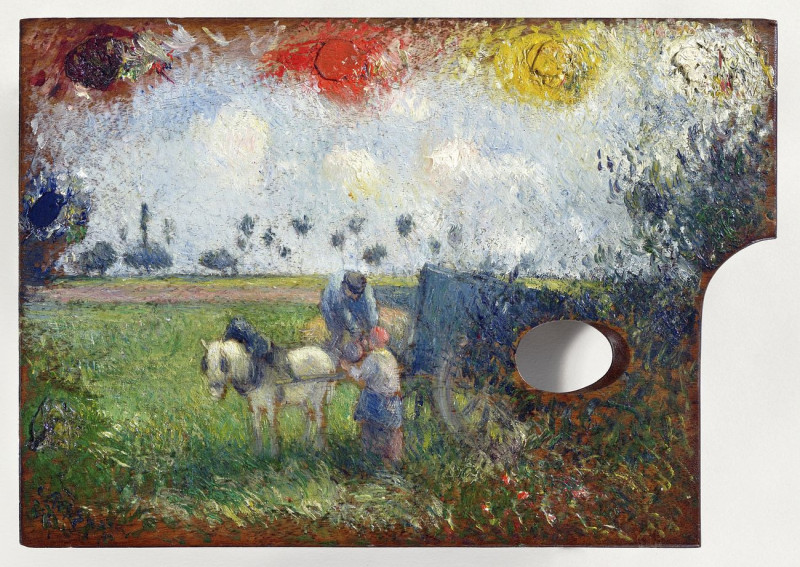Duinlandschap (1922)
Technique: Giclée quality print
Recommended by our customers
More about this artwork
"Duinlandschap," a captivating piece crafted by Bernard Essers in 1922, stands out in the realm of graphic art with its bold contrasts and fluid forms. This striking black and white print illustrates a dynamic and somewhat stylized landscape of dunes, showcasing Essers' mastery over the linocut technique.The composition draws the viewer's eye across a scene dominated by a windswept tree, its branches twisting vigorously as though caught in a perpetual breeze. The tree's exaggerated curves and swirls echo throughout the surrounding clouds and hills, imbuing the scene with a rhythmic movement that is almost palpable.In the sky, Essers introduces birds soaring freely, adding a sense of vitality and freedom to the otherwise static landscape. What's particularly intriguing in this portrayal is the artist’s use of stark black and white contrasts, which not only defines but dramatizes the natural elements, highlighting their textures and forms.As a piece, "Duinlandschap" is not just a visual exploration of nature but a distinct interpretation that invites viewers to perceive the natural world through a lens of intensity and expressionism.
Delivery
Returns
Bernard Essers (11 March 1893 – 13 May 1945) was a Dutch painter. His artistic contributions were showcased in the painting event of the art competition during the 1936 Summer Olympics. Furthermore, Essers' work was featured in the exhibition and sale titled Onze Kunst van Heden (Our Art of Today) held at the Rijksmuseum in Amsterdam in 1939.





